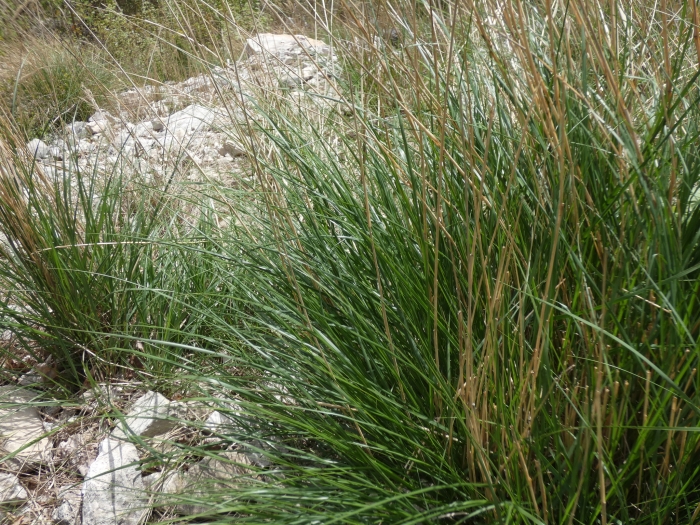Spear Grass
(Achnatherum calamagrostis)
Spear Grass (Achnatherum calamagrostis)
/
/

Yves Bas
CC BY 4.0
Image By:
Yves Bas
Recorded By:
Copyright:
CC BY 4.0
Copyright Notice:
Photo by: Yves Bas | License Type: CC BY 4.0 | License URL: http://creativecommons.org/licenses/by/4.0/ | Rights Holder: Yves Bas | Publisher: iNaturalist | Date Created: 2021-05-09T10:26:40-07:00 |






























Estimated Native Range
Summary
Achnatherum calamagrostis, commonly known as Spear Grass, is a deciduous perennial grass native to the clearings in the mountains of central and southern Europe. It typically grows to a height and width of 2-4 feet (0.6-1.2 meters), forming dense mounds of blue-green foliage. The plant is notable for its long, feathery, silvery plumes that appear in summer and persist into winter, adding visual interest to the landscape. The flowers are not particularly showy, but the plumes are valued for their texture and movement in the breeze.
Spear Grass is appreciated for its low maintenance requirements and its ability to add structure to garden designs. It is often used in ornamental plantings, as a specimen in garden borders, and for naturalistic landscaping. This grass thrives in full sun and adapts to a range of soil types, provided they have good drainage. While it tolerates medium to high water conditions, it is also drought-tolerant once established. The cultivars ’Allgäu’ and ’Lemperg’ have been recognized with the Royal Horticultural Society’s Award of Garden Merit for their outstanding qualities. Potential problems include rust and fungal diseases in humid conditions. Spear Grass is not known for aggressive roots or significant invasiveness, but it can self-seed if conditions are favorable.CC BY-SA 4.0
Spear Grass is appreciated for its low maintenance requirements and its ability to add structure to garden designs. It is often used in ornamental plantings, as a specimen in garden borders, and for naturalistic landscaping. This grass thrives in full sun and adapts to a range of soil types, provided they have good drainage. While it tolerates medium to high water conditions, it is also drought-tolerant once established. The cultivars ’Allgäu’ and ’Lemperg’ have been recognized with the Royal Horticultural Society’s Award of Garden Merit for their outstanding qualities. Potential problems include rust and fungal diseases in humid conditions. Spear Grass is not known for aggressive roots or significant invasiveness, but it can self-seed if conditions are favorable.CC BY-SA 4.0
Plant Description
- Plant Type: Grass
- Height: 2-4 feet
- Width: 2-4 feet
- Growth Rate: Moderate
- Flower Color: N/A
- Flowering Season: Summer, Fall
- Leaf Retention: Deciduous
Growth Requirements
- Sun: Full Sun
- Water: Medium, High
- Drainage: Medium, Fast
Common Uses
Low Maintenance, Salt Tolerant
Natural Habitat
native to the clearings in the mountains of central and southern Europe
Other Names
Common Names: Needle Grass, Silver Spike Grass, Silvergräs, Rauhgras
Scientific Names: , Achnatherum calamagrostis, Calamagrostis lapponica, Stipa calamagrostis, Calamagrostis neglecta, Calamagrostis argentea, Lasiagrostis calamagrostis, Arundo argentea, Deyeuxia neglecta, Stipa calamagrostis subsp. glabra
GBIF Accepted Name: Achnatherum calamagrostis (L.) P.Beauv.